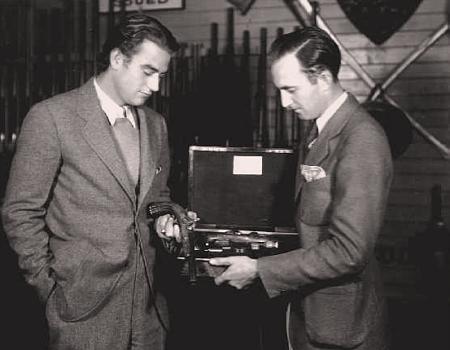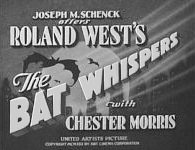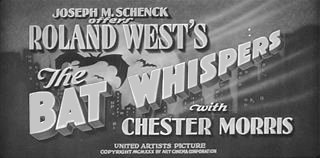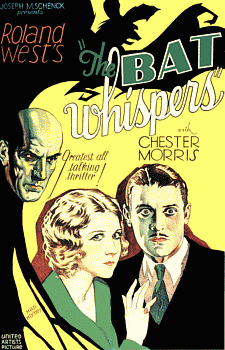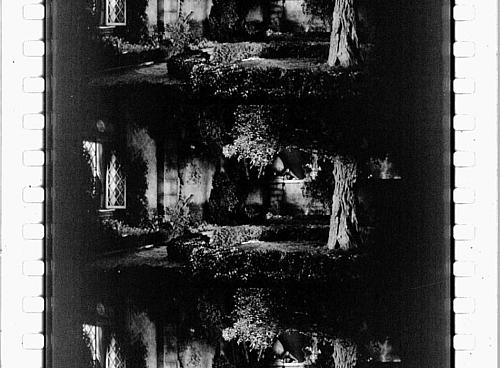
Is Born, Dies, and is Resurrected...

coverage starts on page 13
Happy Days, produced in 1929 at the dawn of sound, was the first 70mm production made by Fox Film Corporation in its Grandeur process. While Fox produced the largest number of wide film movies in 1929-1930, MGM, Warner Bros., and Paramount also played with wider gauges ranging from 55 to 70mm. Despite the willingness of the major studios to adopt a wider film standard, the lack of any concerted effort to agree what that standard would be resulted in the concept dying after a brief two year flurry of activity. Twenty five years later 70mm would re-emerge as a means of competing with Cinerama.
Hollywood has a way of somewhat exaggerating the facts. The Big Trail was by no means the most important picture produced up until 1929. It wasn't even very entertaining. John Wayne's career pretty much stayed on hold for another ten years. Panoramic shots of wagon trains and buffalo in black and white couldn't overcome a weak story. And poor promotion of 70mm with exhibitors and the public delayed acceptance of wide film systems until TV was a threat.
THAT'S A VALUABLE GUN YOU HAVE THERE
Louis Witte, head of the arsenal and effects department at the Fox Studios, showing part of the studio's collection to John Wayne, the youthful player who is destined to be a screen sensation in his first picture, Raoul Walsh's "The Big Trail." The pair of duelling pistols shown in and out of their case is valued at $750. Witte claims the studio would not part with them for twice that sum.Original caption for Fox publicity still And So It Is With
Title cards from the 35mm and 65mm versions of Roland West's The Bat Whispers
Sound was a more important advertising point than was the wide gauge film.
Original 65mm frames from The Bat Whispers, optically printed to modern 70mm format.
Courtesy of Theo GluckThe Bat Whispers was photographed with Captain Ralph Fear's "Fearless Superfilm" cameras. They'd go into disuse after only about one year. Later an abortive additive color process, Thomascolor, would put them briefly back into use, and it would not be until Mike Todd and American Optical went to work on a new process referred to as "Magna" that they'd come back out of mothballs. Of some significance is the fact that The Bat Whispers was produced by Joseph M. Schenk, who became an important founding member of Magna Theatre Corporation.
For more information on the wide film formats of 1929-1930 click here
















E-mail the author
CLICK HERE
©1996 - 2004 The American WideScreen Museum
http://www.widescreenmuseum.com
Martin Hart, Curator
1930.jpg)
